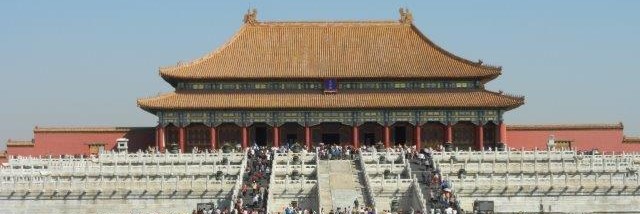
The Forbidden City - 9/17/12
The photos on this page can be clicked to see a the photo at original size. Wherever possible, there is a photo of the description provided for the specific place.
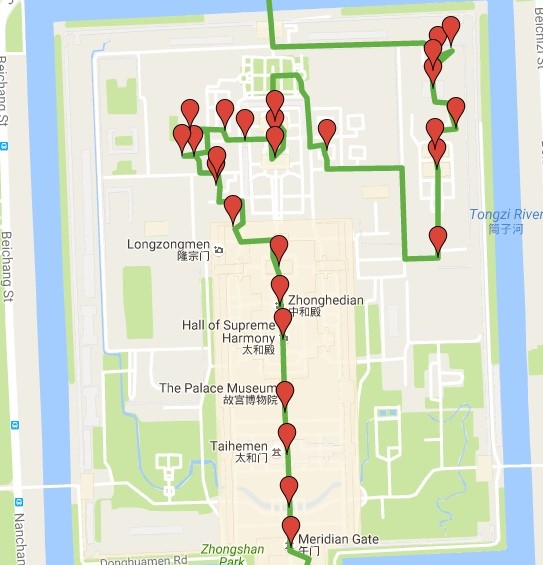
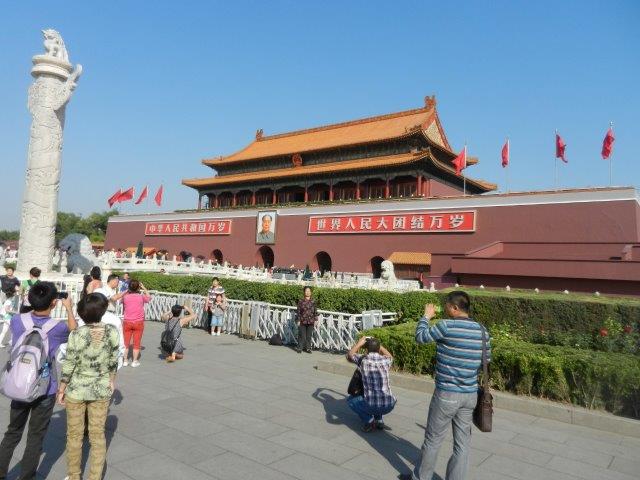
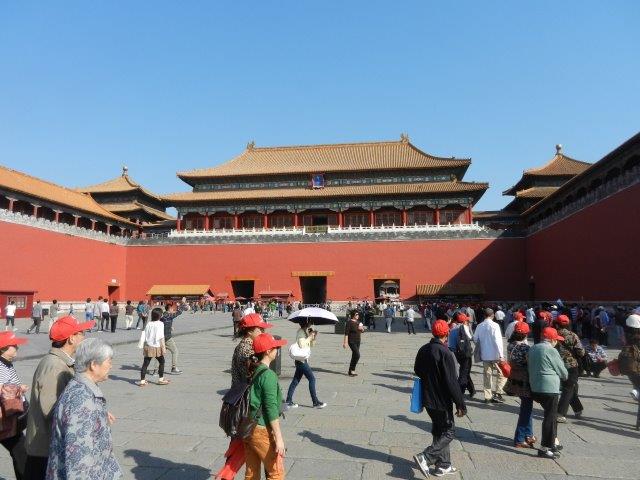
(1) Meridian Gate
We found long lines in the courtyard before the the Meridian Gate, the south gate of the museum. We finally got to the counter and paid the admission fee of ¥60, about $9 for each of us. We also rented a guide pad, which had a little map of the Forbidden City with lights over each of the important places. When we walked near where one of the lights were on the map, the light came on and gave us an explanation in English. After buying our tickets, we walked through a short tunnel under the Meridian Gate into the Forbidden City.
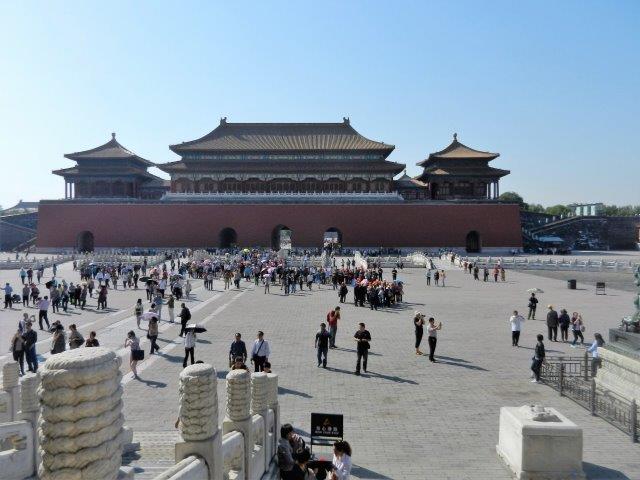
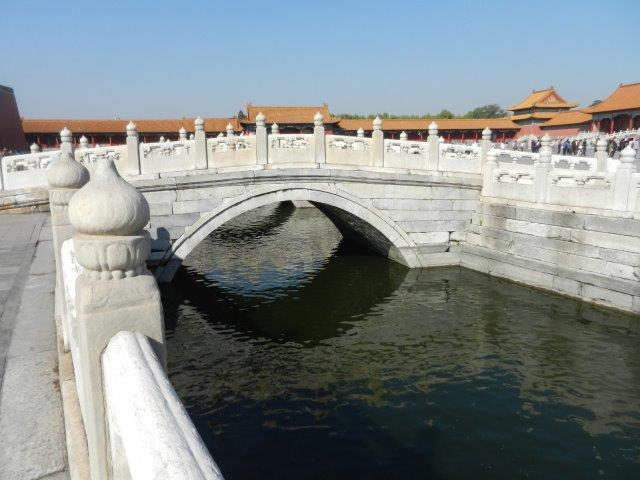
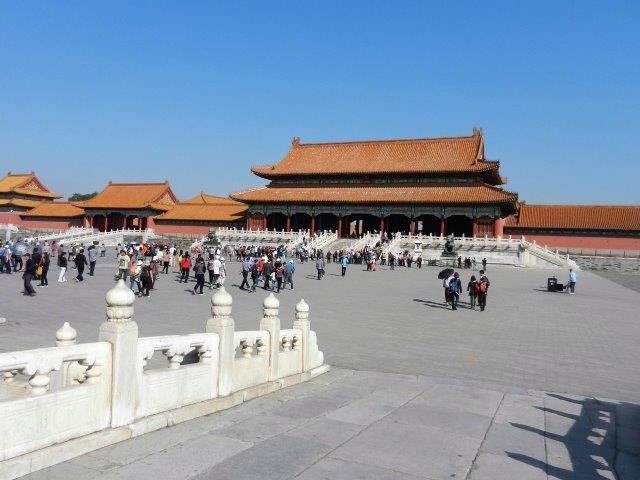
(2) Five bridges over the Inner Golden River & (3) Gate of Supreme Harmony
Once inside, we walked over one of the five bridges crossing the Inner Golden River. The "river" actually appeared to be part of the moat surrounding the Forbidden City, which was called the Tongzi River. Through the court yard, we passed thought the building called the Gate of Supreme Harmony.
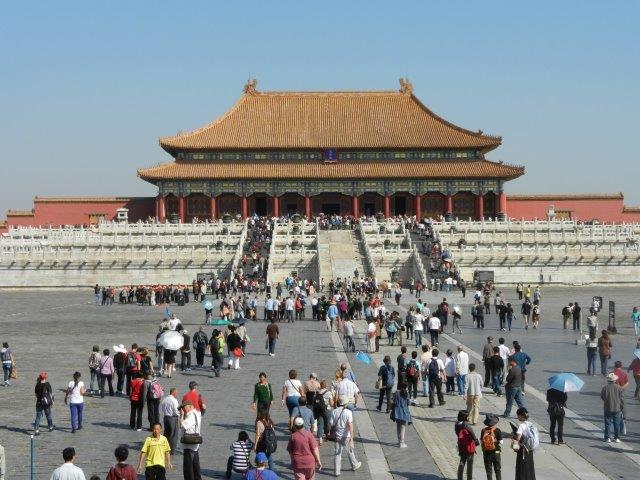
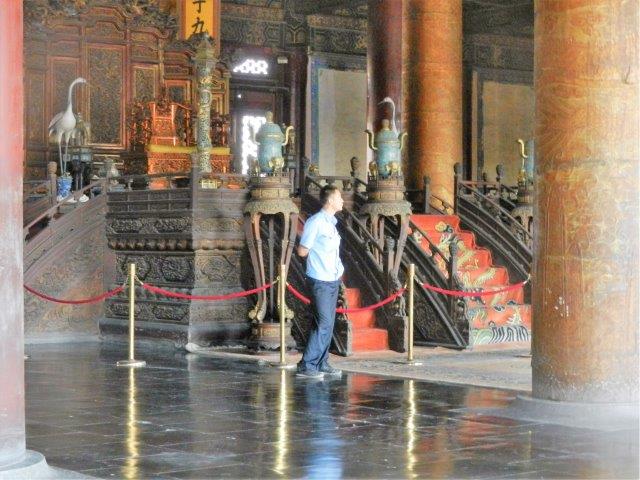
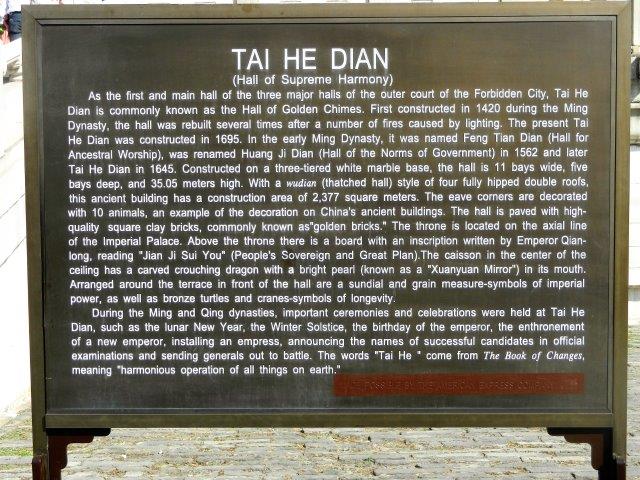
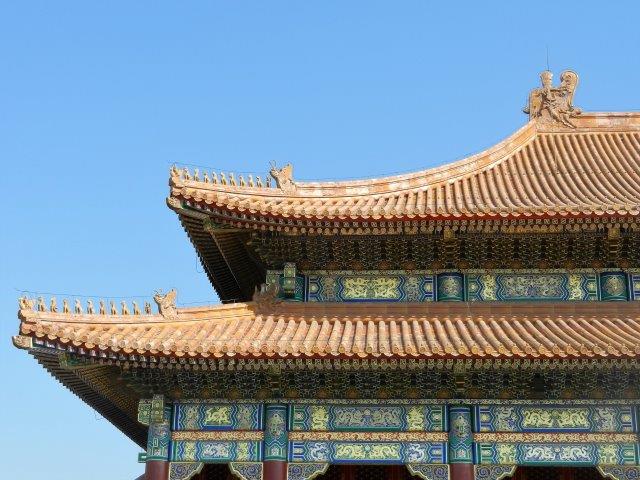
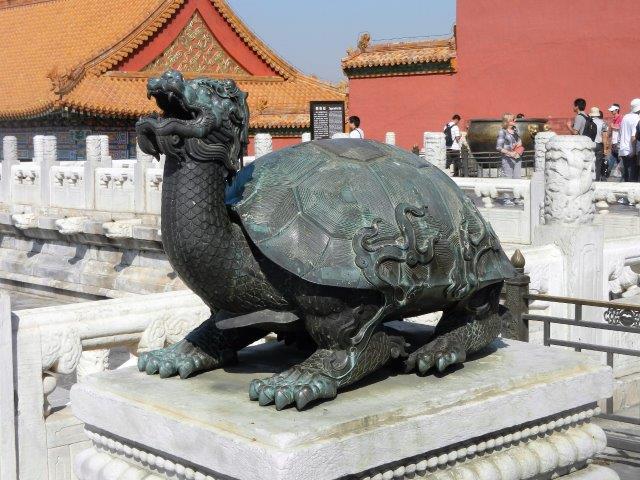

(4) Outer Court & (5) Hall of Supreme Harmony
We entered the Outer Court and got our first view of the beautiful Hall of Supreme Harmony. All of the buildings had yellow roofs, and we noticed that on the each of the corners of the roofs, there was a line of little characters. The characters were led by a man riding a phoenix. At the end of the line was a man followed by a larger imperial dragon. Apparently, the number of figures denoted the importance of the building, with the Hall of Supreme Harmony being the most important, with 12 figures. The characters on the roof corners a magical quality to the buildings. At ground level, there were bronze statutes of lions, a turtle, and a crane, as well as a grain measure, sundial, and large bowls. Inside the Hall of Supreme Harmony was the famous throne.

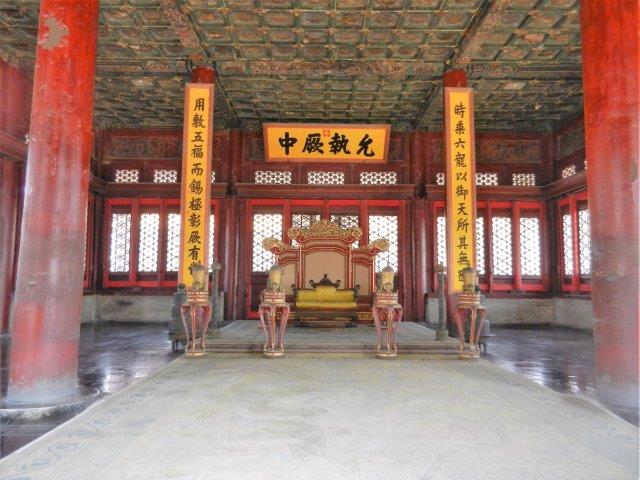
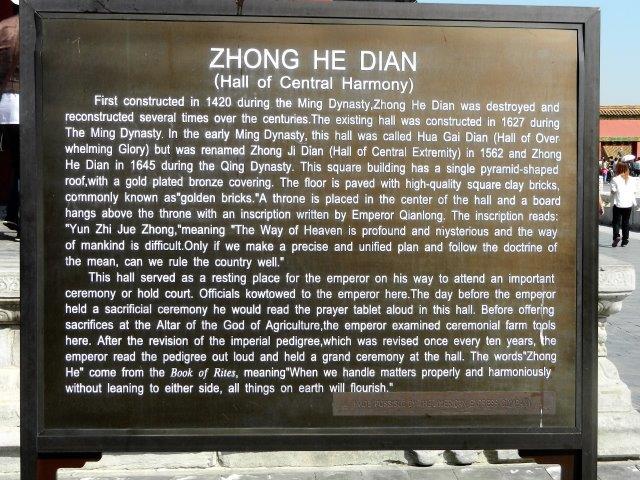
(6) Hall of Central Harmony
We walked along the raised area containing the
Hall of Supreme Harmony, and looked into the Hall of Central
Harmony, which had a throne with a yellowed cushion bench.
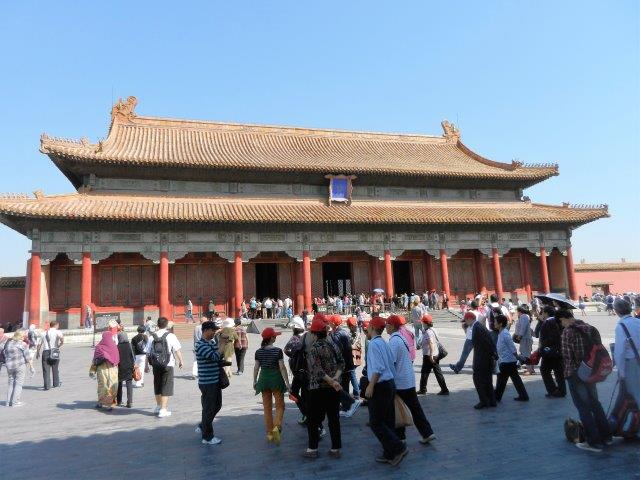
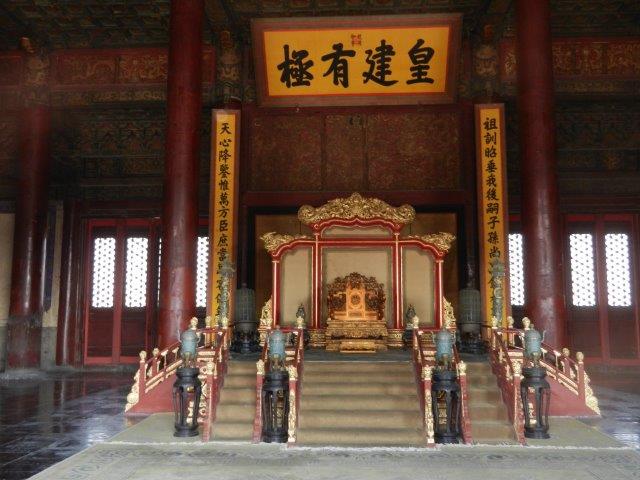
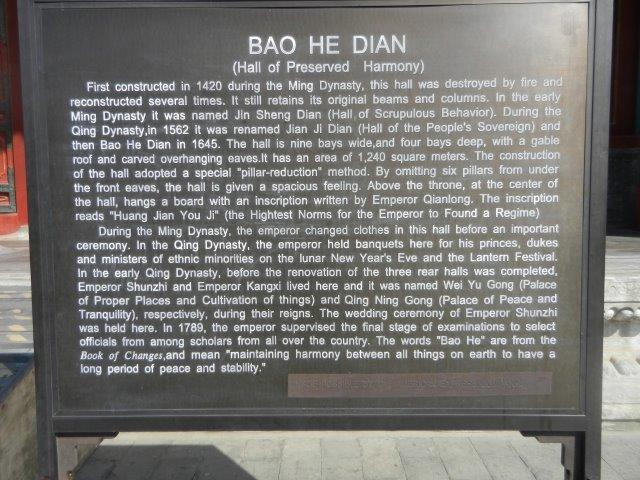
(7) Hall of Preserved Harmony
At the north end of the raised area was the Hall of Preserved Harmony, which had another large throne.
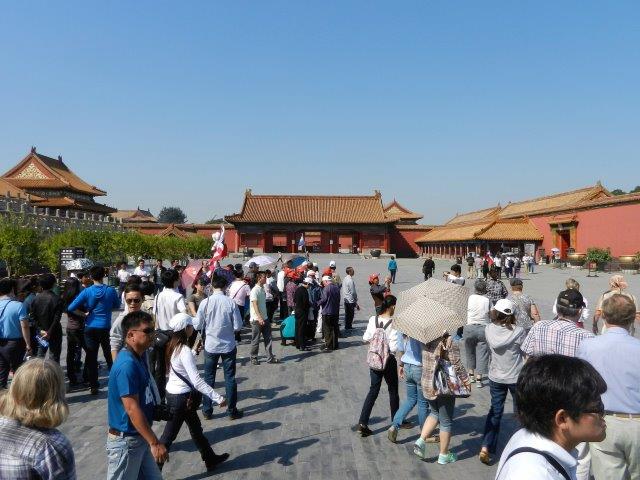
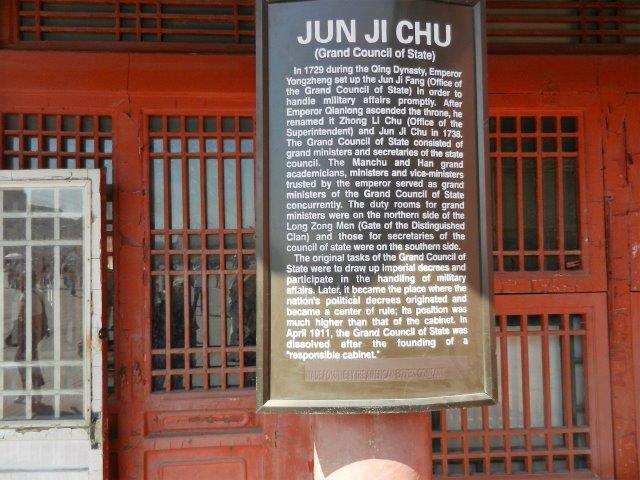
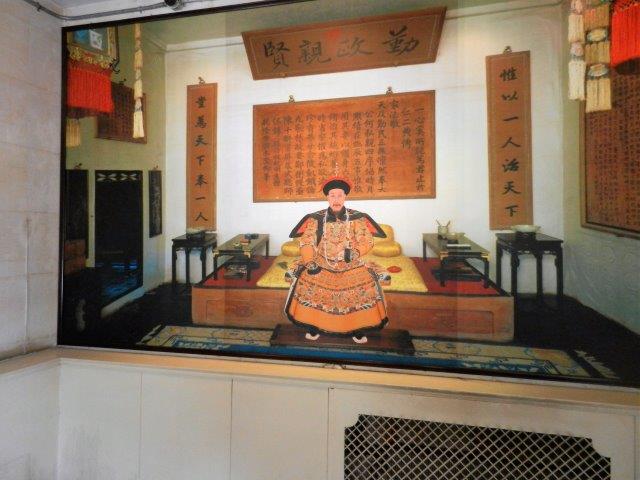
(8) Jun Ji Chu - Grand Council of State
We walked down the steps from the raised area leaving the outer court, and across a wide paved open space into the inner court, where the emperor and extended families used to live. We walked into the northeast section of the inner court. We visited the Grand Council of State building where military affairs were managed.

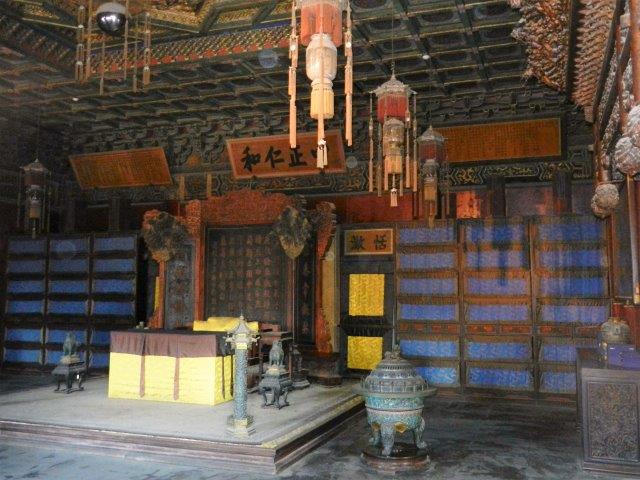

(9) Yang Xin Dian - Hall of Mental Cultivation
We walked down a northward path and found the
Hall of Mental Cultivation. Some of the emperors lived there the
bedroom was preserved.


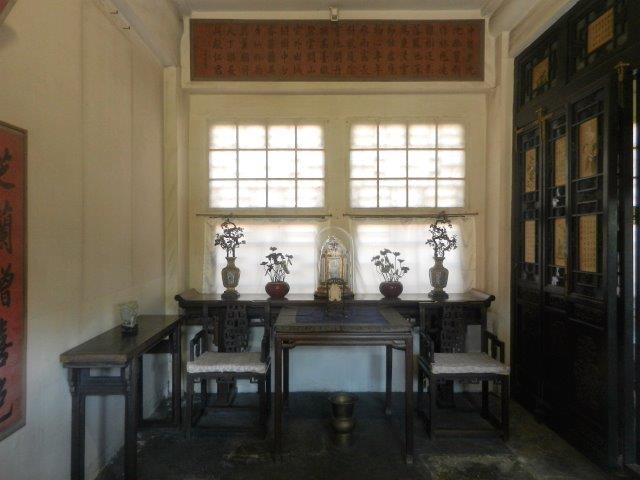
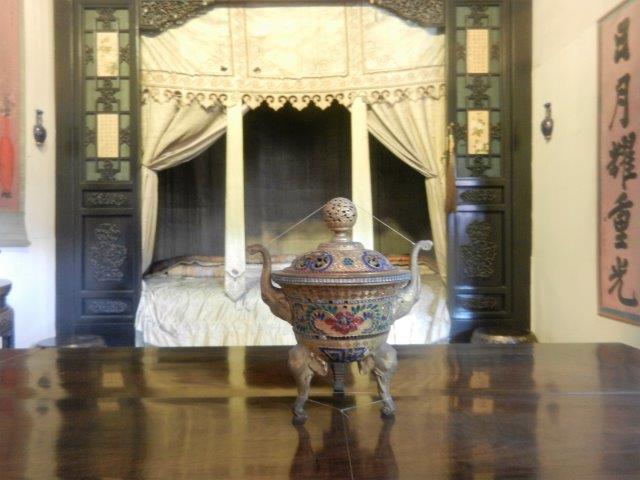

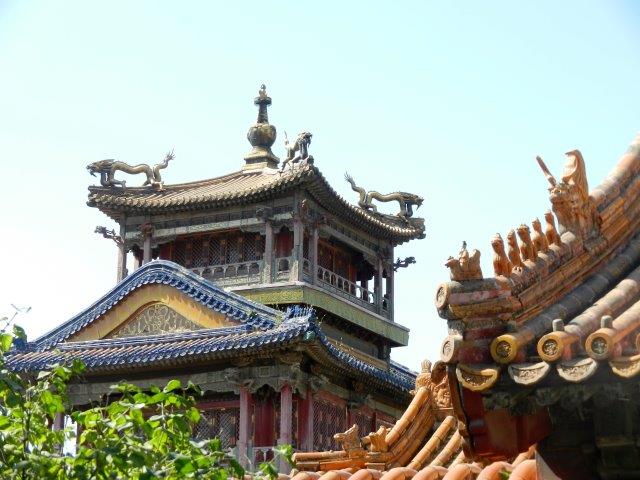
(10) Ti Shun Tang - Hall of Consolation
We walked out of the Hall of Mental Cultivation and right into the the Hall of Consolation, where the empress lived. Out the door, we could could see the upper floor of the Pavilion of the Rain of Flowers with it's 4 bronze dragons on the roof edge instead of the usual mythical figures on the other roofs. That building was not open for visitors.


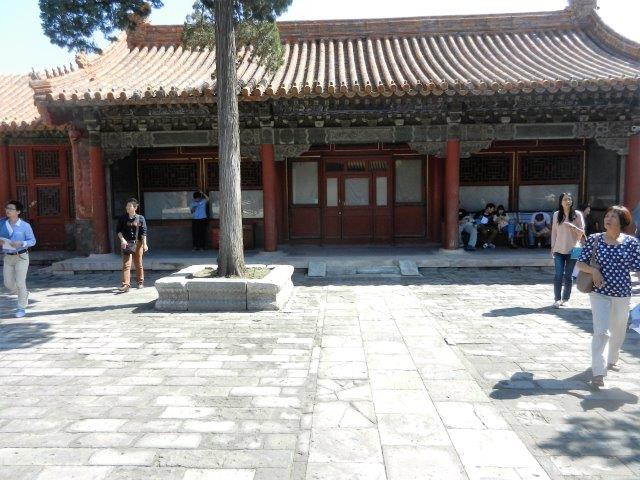
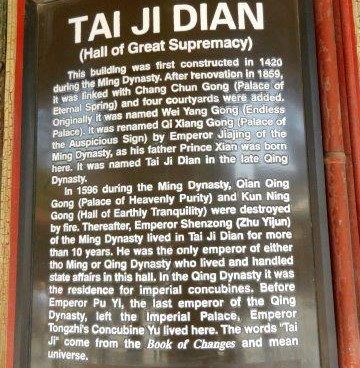

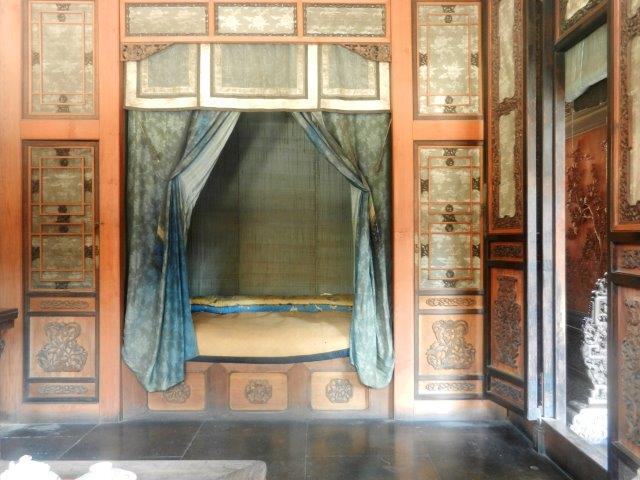
(11) Tai Ji Dian - Hall of Great Supremacy
We continued on the path east, then north, to the entrance of the Hall of Great Supremacy. It was usually a home for imperial concubines.



(12) Ti Yuan Dian - Hall of State Unity
Next door was the Hall of State Unity. It was another residence for imperial concubines.




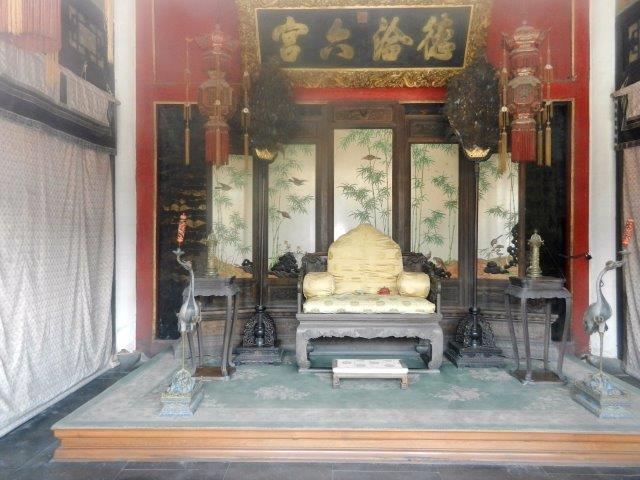
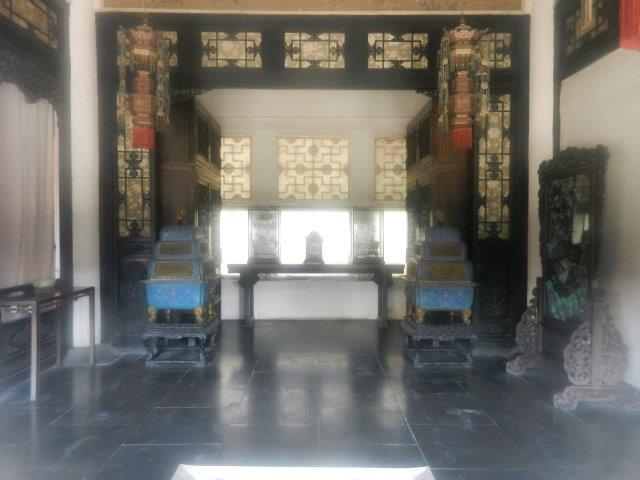
(13) Chang Chun Gong - Palace of Eternal Spring
Further north on the path, we found the Palace of Eternal Spring. It usually served as another home for imperial concubines.
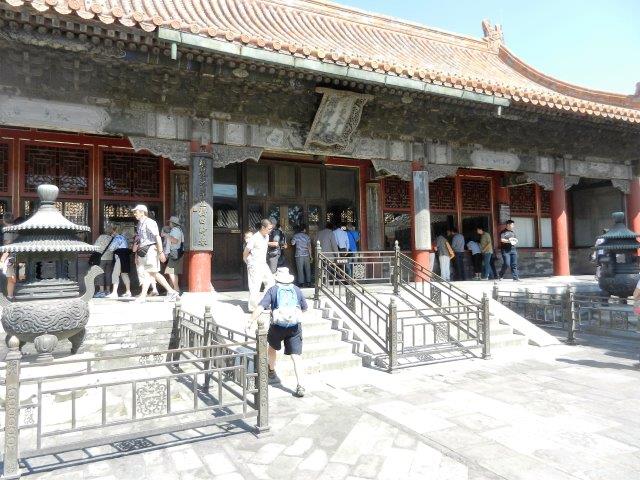
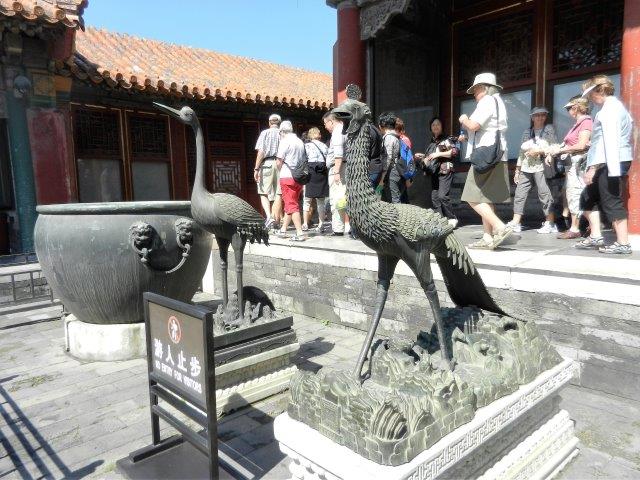
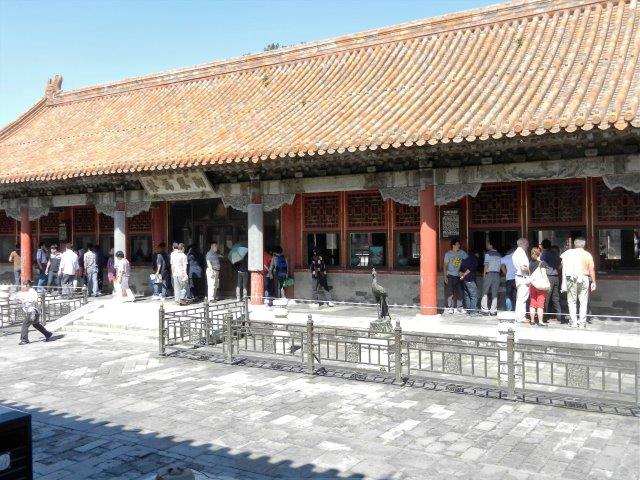
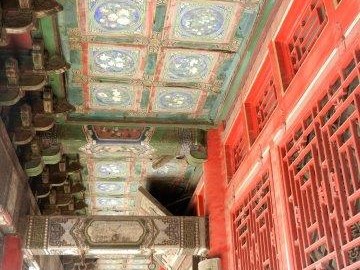

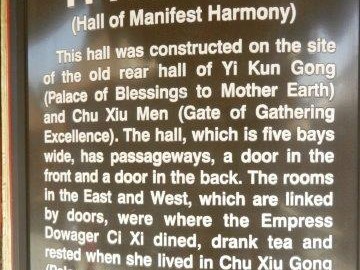
(14) Ti He Dian - Hall of Manifest Harmony
There did not seem to be much more to see heading north, so we went west and found the Hall of Manifest Harmony, which was nicely painted and decorated.

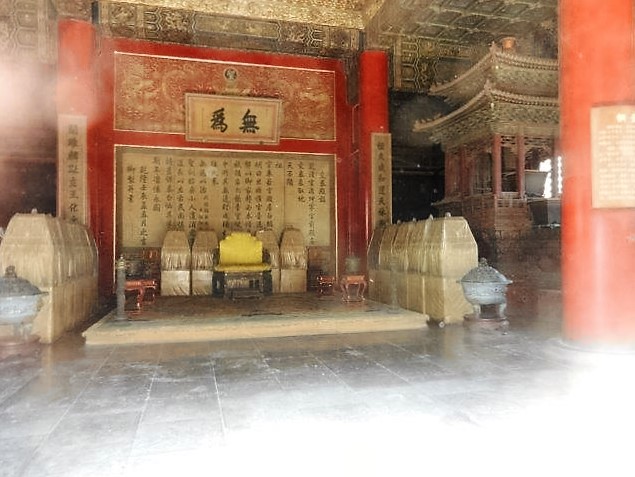
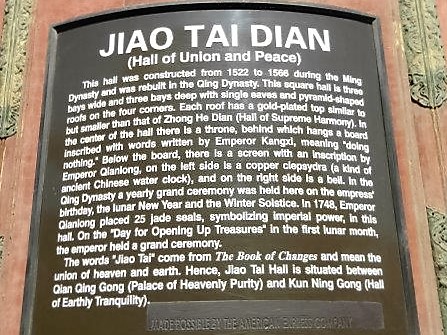
(15) Jiao Tai Dian - Hall of Union and Peace
We continued west into the central part of the inner court. There we found three buildings, arranged as a smaller version of the throne buildings on the raised area of the outer court. The middle building, the Hall of Union and Peace, had it's own throne.
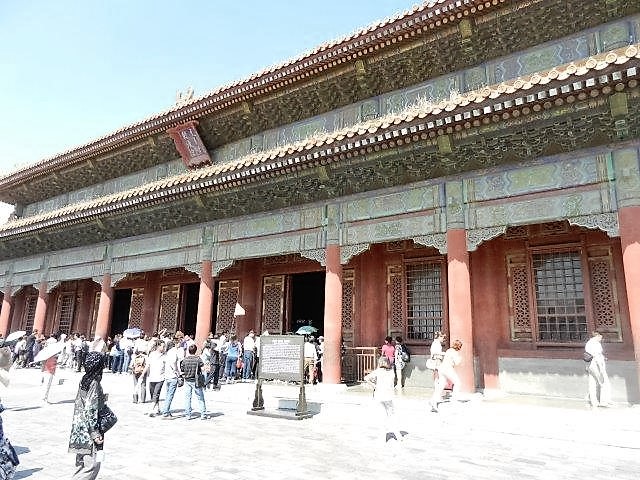
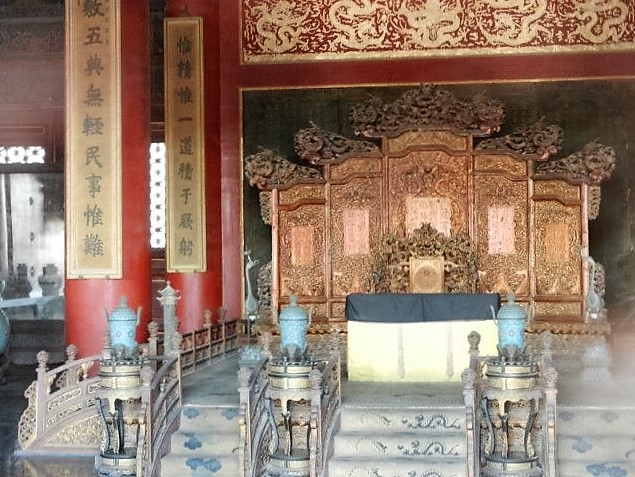
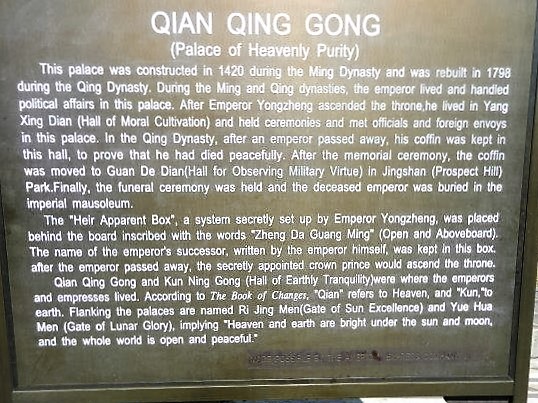
(16) Quan Qing Gong - Palace of Heavenly Purity
Just to the south was the Palace of Heavenly Purity. It was the residence of some of the early emperors.


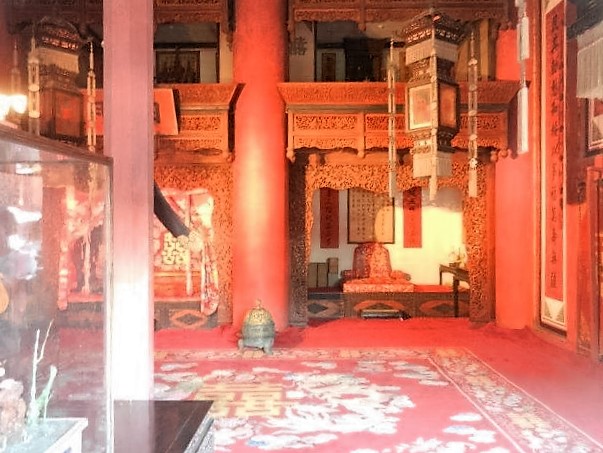
(17) Kun Ning Gong - Hall of Earthly Tranquility
To the north was the Hall of Earthly Tranquility. It was the residence of some of the early empresses.

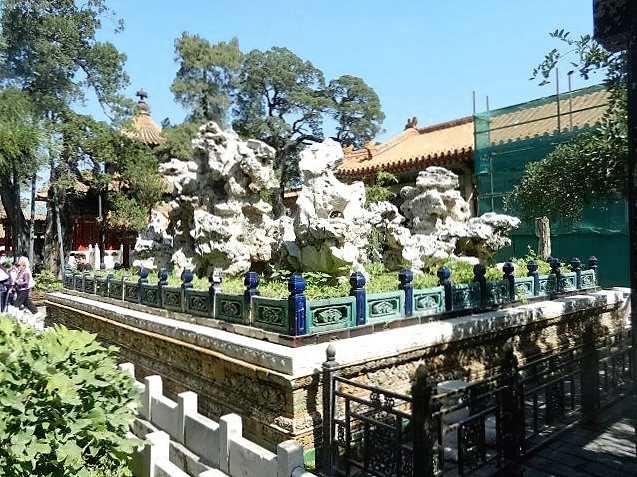
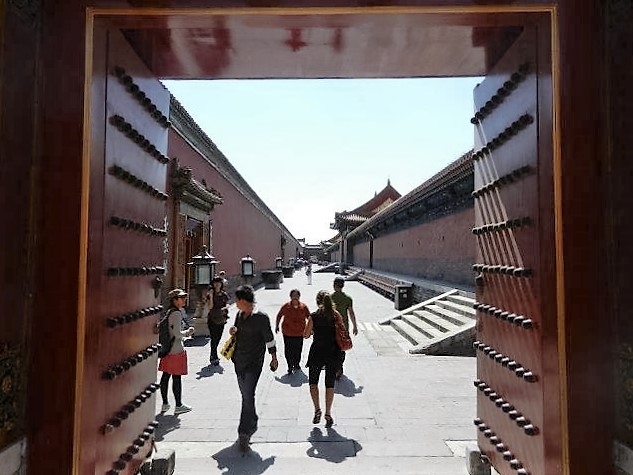
Rest stop: The Imperial Garden
Further north, just before the gate out, was a garden area. After sitting down for a short rest, we walked south on a tunnel like path between the areas of the inner court.
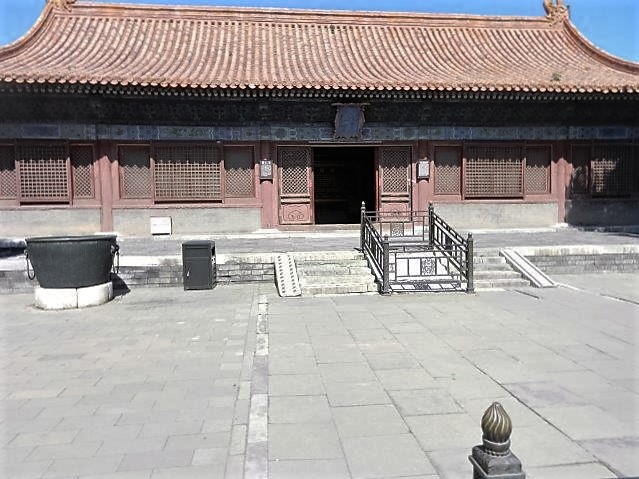

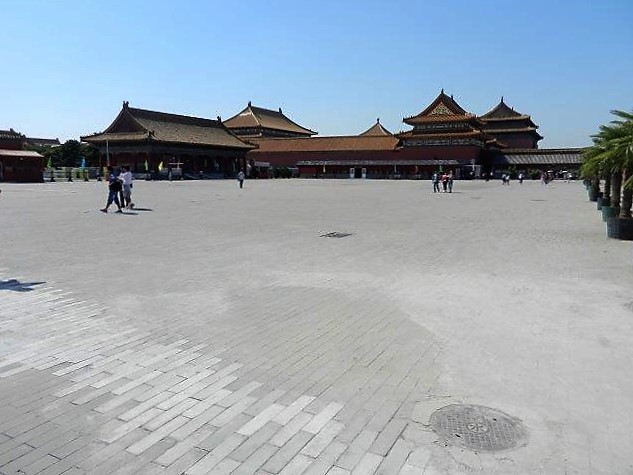
(18) Jing Ren Gong - Hall of Benevolence
We came upon the Hall of Benevolence, a palace where some of the imperial concubines lived. From there, we walked west and south in the tunnel like paths looking for the 9 dragon wall.

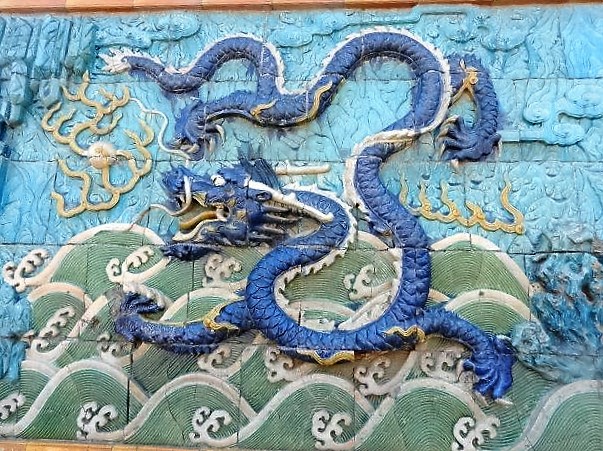
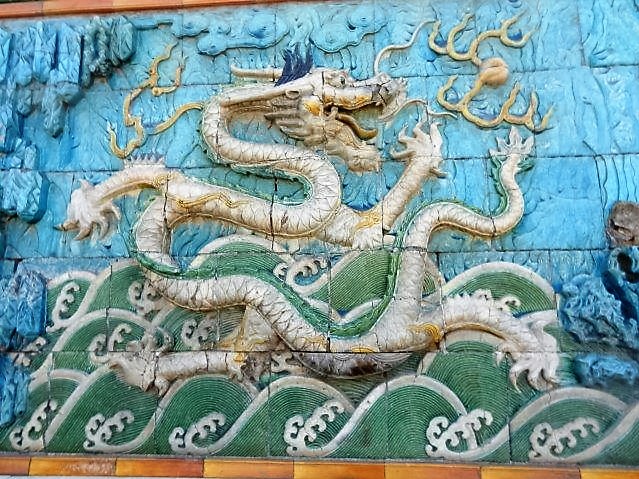

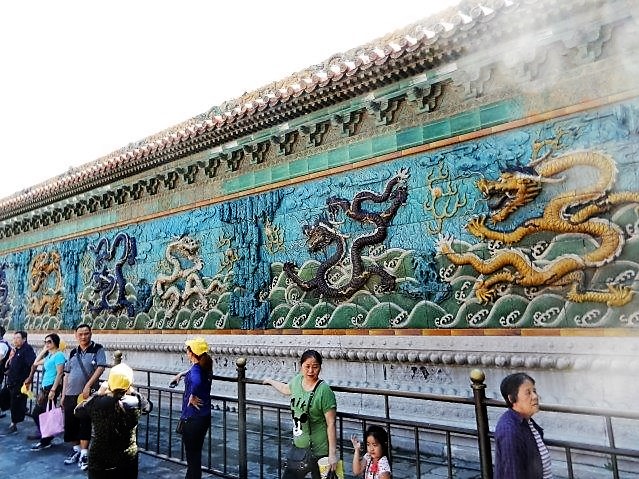
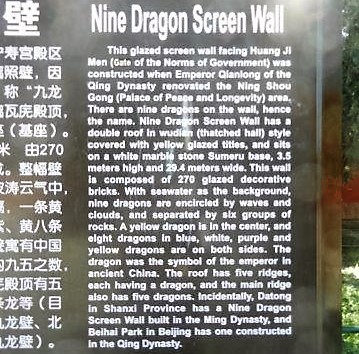
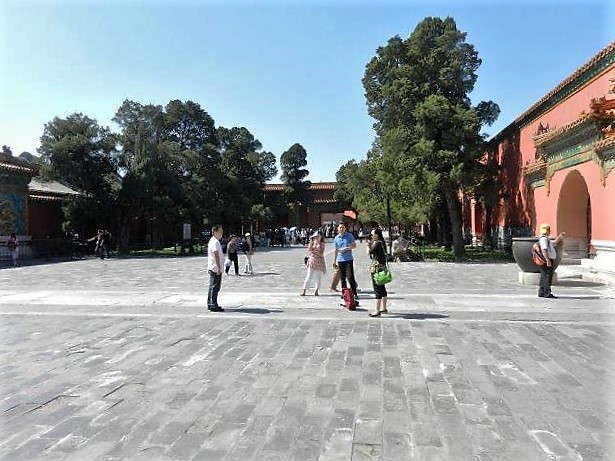
(19) Nine Dragon Screen Wall
The 9 dragon screen wall is a must-see in the forbidden city. We were fascinated by the story of the broken tile. The third dragon from the left is a white dragon (picture shown above), but there is a discolored tile at the bottom. Legend has it that the day before the emperor's inspection, one tile at the bottom of the third dragon, suddenly fell down and broke into many pieces. Worried that everyone would be beheaded if one part was left broken, a carpenter made a wooden one to look exactly like the original. The emperor did not discover the wooden replacement and the lives of all the craftsmen were saved.

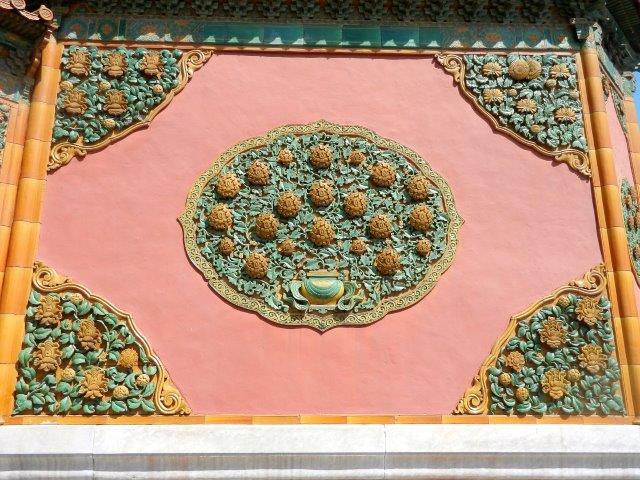
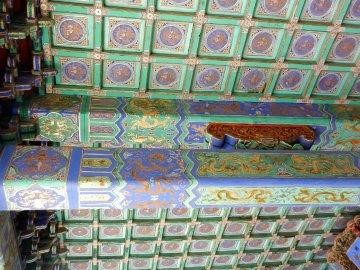
20: Huang Ji Dian - Hall of Imperial Supremacy
Walking north inside the western area of the inner court, we came to the Hall of Imperial supremacy. This housed paintings and other art work.



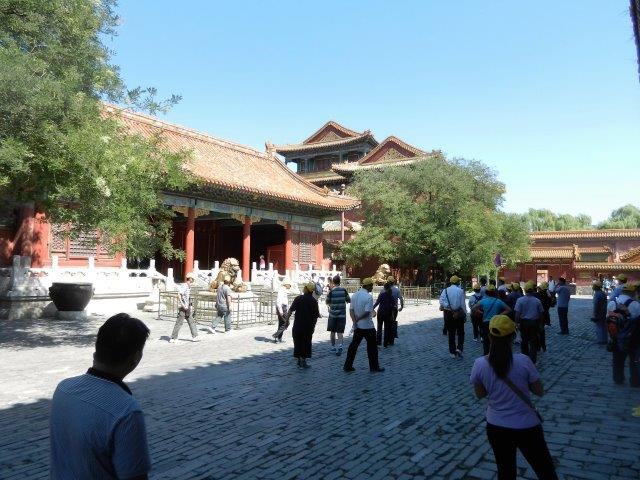
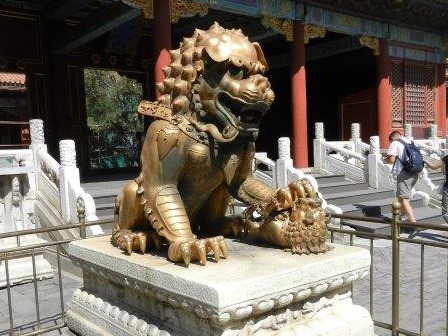
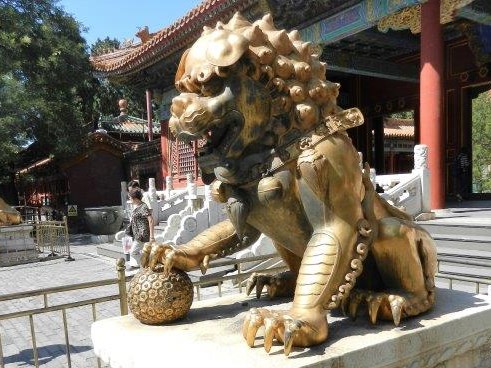
(21) Ning Shou Gong - Palace of Peace and Longevity
A little further north was the Palace of Peace and Longevity, which also held art work. There were 2 guardian lions in front of the building. On the left, the male lion holds down a ball. On the right, the female lion holds down her cub.

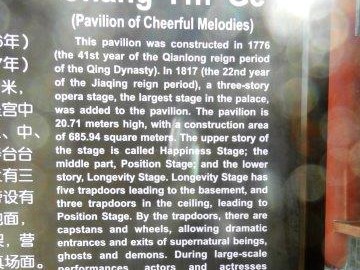
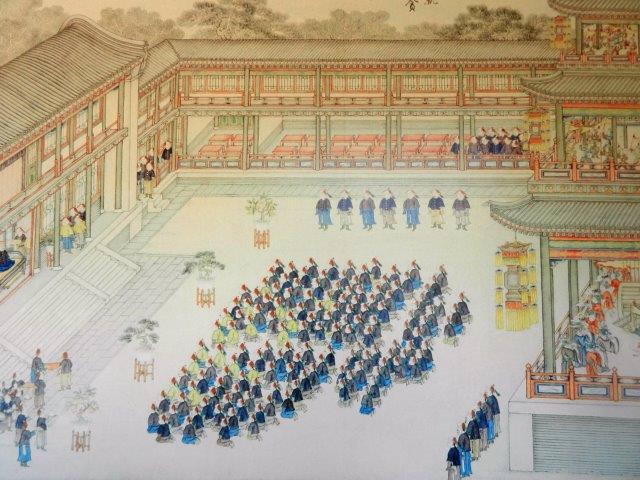
(22) Chang Yin Ge - Pavilion of Cheerful Melodies
Walking north, we found the Pavilion of Cheerful Melodies on the right. It had 3 stacked stages for plays and opera, able to hold up to 1,000 actors and actresses.
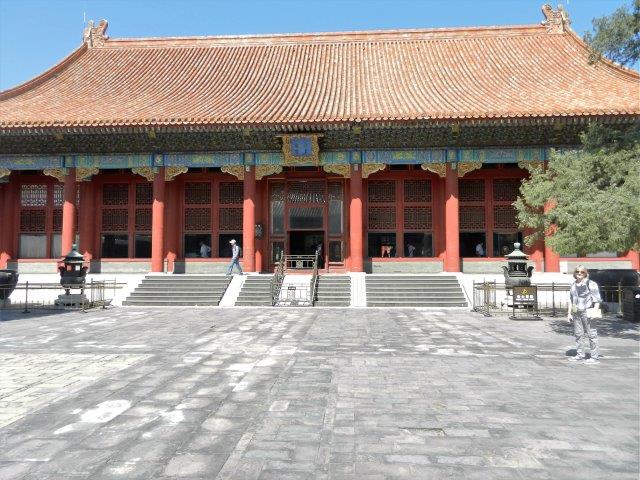
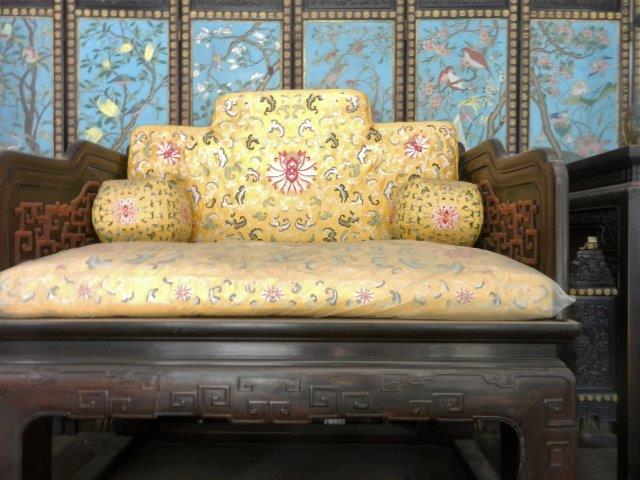
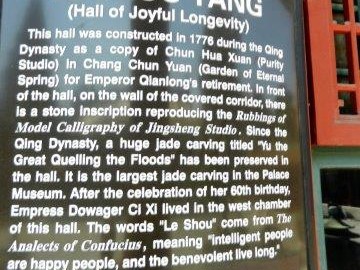


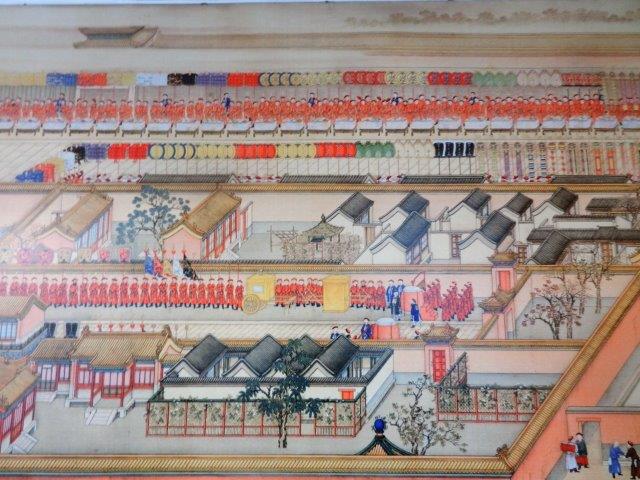
(23) Le Shou Tang - Hall of Joyful Longevity
Walking further north, we came upon the Hall of Joyful Longevity, which housed interesting art work.
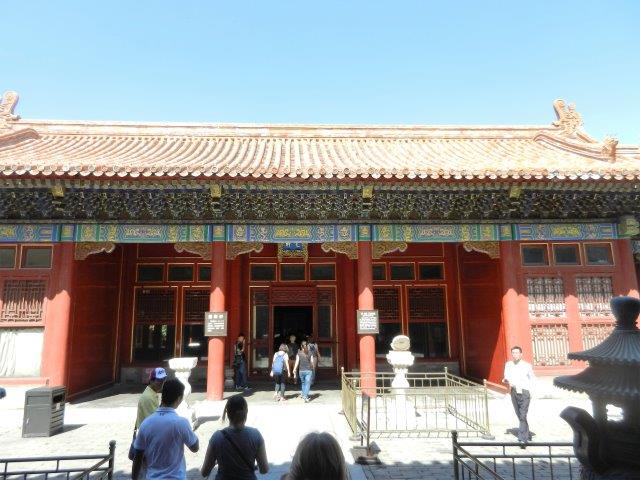
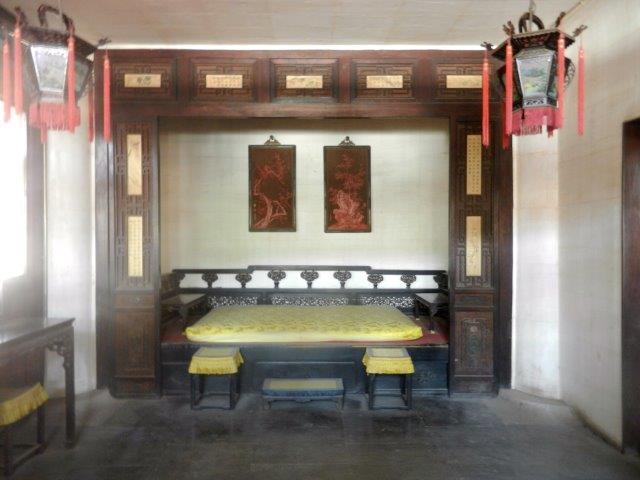
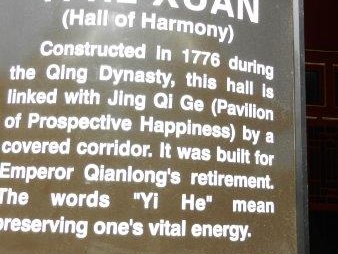
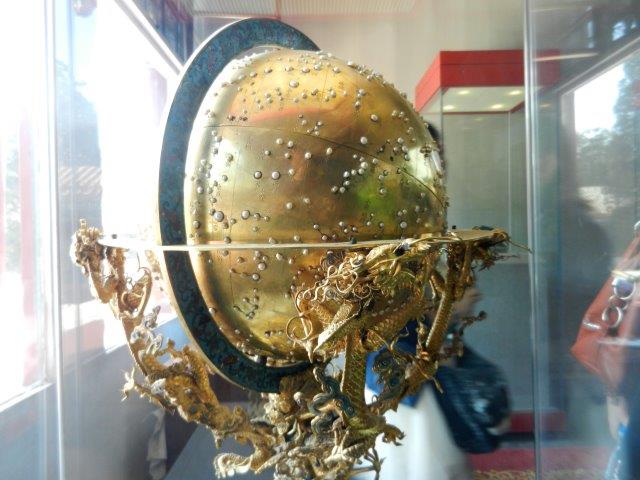
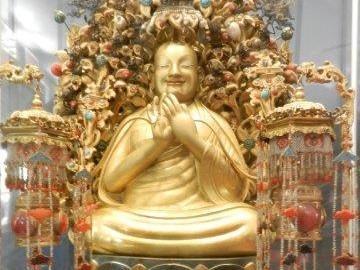
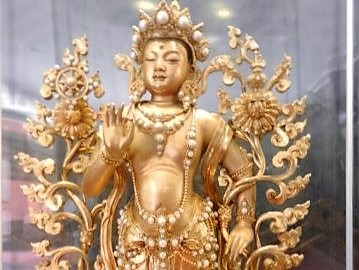
(24) Yi He Xuan - Hall of Harmony
We viewed the exhibits in the Hall of Harmony, including a gold globe of the stars, buddah and tara.

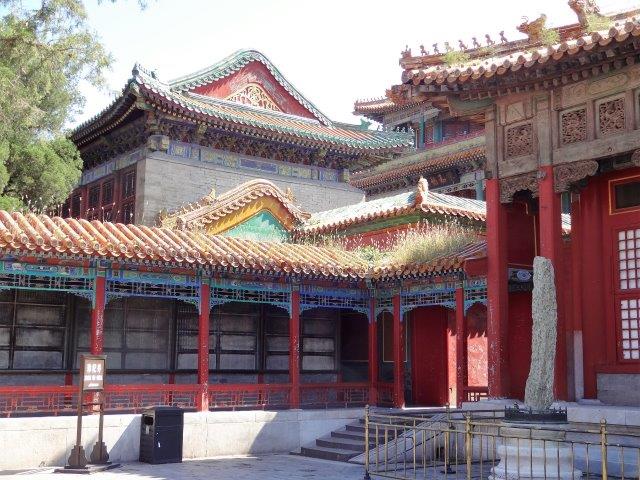

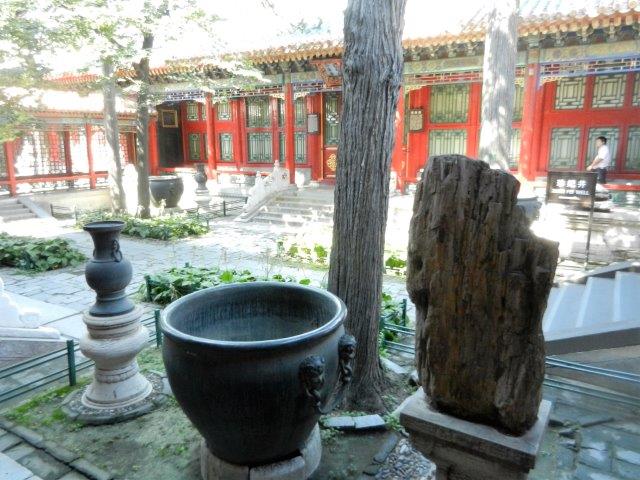
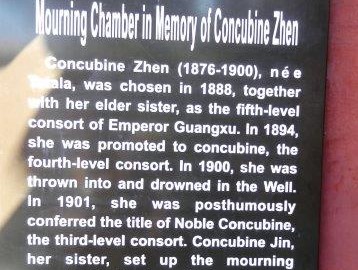
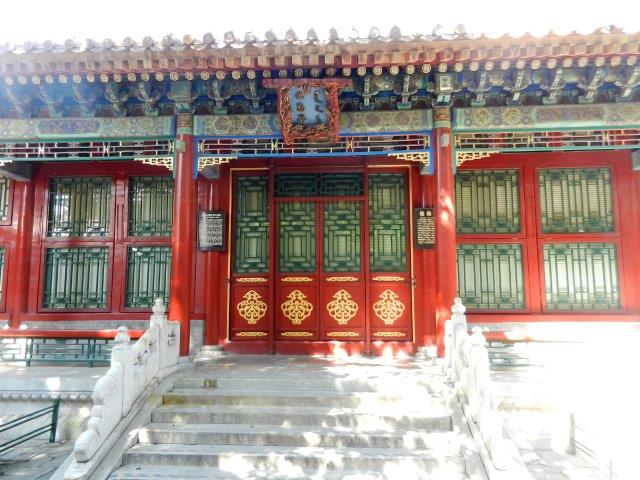
(25) Morning Chamber in Memory of Concubine Zhen
In the northeast corner of the Forbidden City was the Morning Chamber in Memory of Concubine Zhen. During the 1890's, Consort Zhen encouraged the Guangxu Emperor to introduce political reforms. She antagonized Empress Dowager Cixi, who ultimately placed Zhen under house arrest. We had been hearing bits and pieces about this story at various places in the Forbidden City.
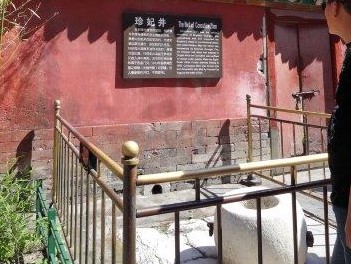
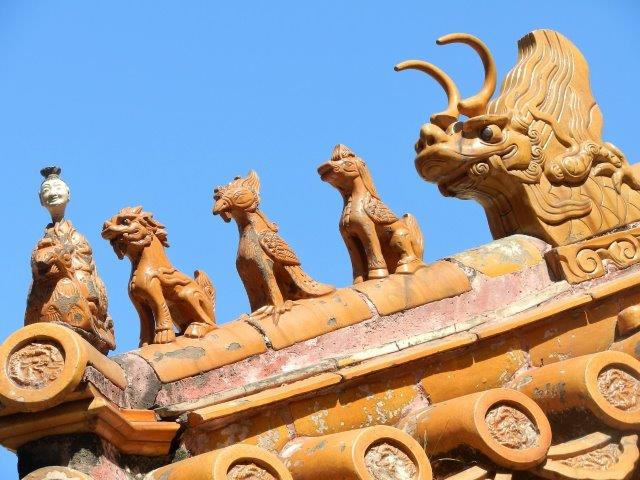
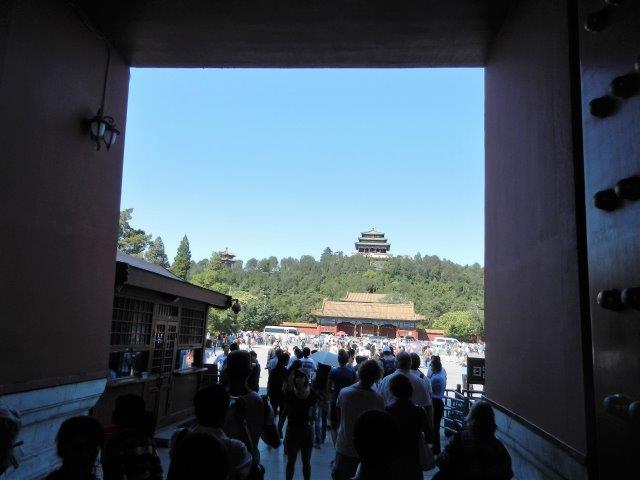
(26) Well of Concubine Zhen
The story ends with Empress Dowager Cixi ordering Zhen to be thrown into this well. We then walked east to the Spiritual Valor Gate and out of the north exit facing Beihai Park.